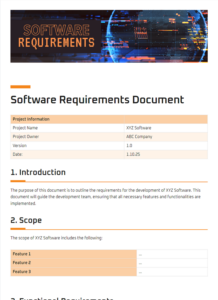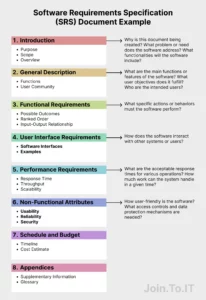Writing a software requirements specification (SRS) is a crucial step in the software development process. It helps to define the functional and non-functional requirements of the software, ensuring that it meets the needs of the stakeholders. A well-written SRS can help to avoid costly mistakes and delays later in the development process.
There are many different software requirements specification templates available, each with its advantages and disadvantages. The best template for a particular project will depend on the size and complexity of the project, as well as the experience of the team writing the SRS. However, all SRS templates should include the following key sections:
What is a Software Requirements Specification?
A software requirements specification (SRS) is a document that defines the functional and non-functional requirements of a software product. It is used to communicate the needs of the stakeholders to the development team and to ensure that the software meets those needs. A well-written SRS can help to avoid costly mistakes and delays later in the development process.
SRSs can be used for a variety of different types of software products, including web applications, mobile apps, and desktop applications. They can also be used for software updates and upgrades. The size and complexity of an SRS will vary depending on the size and complexity of the software product being developed.
SRSs typically include the following sections:
- Introduction
- Scope
- Functional requirements
- Non-functional requirements
- Glossary
- Appendices
How to Write a Software Requirements Specification
Writing a software requirements specification (SRS) can be a complex and time-consuming task. However, it is an important part of the software development process and can help to ensure that the software meets the needs of the stakeholders. The following steps can help you to write an SRS:
- Identify the stakeholders.
- Gather requirements.
- Analyze requirements.
- Document requirements.
- Review and approve requirements.
Once you have completed these steps, you will have a software requirements specification that can be used to guide the development of the software product.
Conclusion
A software requirements specification (SRS) is a critical part of the software development process. It helps to ensure that the software meets the needs of the stakeholders and that the development team has a clear understanding of what is required. By following the steps outlined in this article, you can write an SRS that will help your project succeed.
There are many different software requirements specification templates available online. By using a template, you can save time and ensure that your SRS is complete and well-organized. However, it is important to remember that a template is just a starting point. You will need to customize the template to fit the specific needs of your project.


